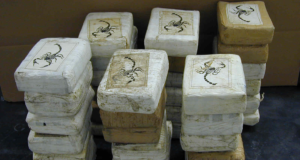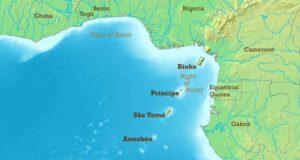By Julie Lenarz – Executive Director.
18th August 2013, Human Rights and Conflict Resolution, Issue 3, No. 6.
When the darkest chapter in the history of Rwanda began on April 6th, 1994 the country had already been in a state of civil war for four years. What turned it into the fastest killing-spree in modern times was the assassination of Rwandan President Habyarimana and Burundian President Ntaryamira. While at the time, the government in Kigali blamed the RPF for shooting down the helicopter, it is now widely accepted that it was an internal conspiracy within the Hutu community to unleash a tidal wave of hatred against the Tutsi.
The question is whether it would have been possible to foreseen and prevent the mass-slaughter or at least stop it when it was already under way. The idea that the international community was impotent in the face of evil must be wholeheartedly rejected, as it relativises the moral responsibility of those who decided to become a silent accomplice rather than engage in a robust and rigid response to crimes against humanity.
While nobody could have predicted such an immense loss of life, the international community ignored warnings and failed to intervene in the early stages of the annihilation campaign, thus fatally violating its responsibilities by endowing the genocidaires with a blanco check for killing with impunity. The genocide was not only the darkest chapter in the history of Rwanda; it was also one of the darkest chapters in the history of the international community.
France was arming and training the Rwandan government forces, despite the nature of the regime and danger of an escalation of violence. It is beyond question that Mitterrand’s government ignored the increased radicalisation of Habyarimana’s regime for the sake of France’s national interests in the region. This policy was a factor in the equation which made the genocide happen, although there is no indication that the French supported the genocidal ideology per se.
The racial vendetta pursued against the Tutsi had been most prominently summarised in the “Ten Commandments of the Hutu”. A report by Human Rights Watch, published in 1993, indicated that Hutu extremists had already began to enthusiastically carrying them out. The findings were in line with a report issued by the CIA the same year, which concluded that a large-scale atrocity was in the making and “the worst case scenario would involve one-half million people dying”.
Therefore, the international community was aware of the military training and ideological warfare against the Tutsi long before the genocide started and was closely involved in the Arusha Peace Accords, which suggested a power-sharing government between Hutu and Tutsi. But since the Accords were overly in favour of the Tutsi, it should have come to no surprise that many Hutu were deeply suspicious of the deal and especially the extremists among them felt they had everything to lose and nothing to gain.
Even though it might not have been possible in the first one or two weeks to determine whether or not genocide was underway, it was beyond doubt that crimes against humanity were committed on a day-to-day basis. While before the genocide took place the situation in Rwanda could have been classified as a two-sided civil war, it rapidly became apparent who had the upper hand in the conflict after the President’s death and killed soldiers and civilians indiscriminately, turning it into a one-sided mass-slaughter. The international community also knew from credible sources on the ground, especially Belgian and French officials, that democratically elected government members had been assassinated by Hutu extremists, most prominently the moderate Prime Minister.
In his briefings to the UN headquarters, General Dallaire already spoke of crimes against humanity four days after the killing had started, although he did not use the term genocide until the end of the month. But whether or not and when and where the “g-word” was actually used seems to be insignificant, given that a mass-scale atrocity was the undeniable reality in Rwanda at the time. That should have been sufficient enough for the international community to engage in principled humanitarian interventionism in the face of evil.
The most fatal decision which enabled the genocidaires to kill over such a long period of time without any serious, external threat was the mishandling over UNAMIR. Instead of reinforcing the unit, as requested by General Dallaire, the US primarily focused on re-launching the Arusha Peace Accords and negotiating a new cease-fire between the two parties. Even worse, the US and UN officials threatened to pull out peace-keeping forces altogether as a punishment for non-compliance. Unfortunately, that was exactly what the perpetrators wanted.
This became brutally apparent when Hutu extremists kidnapped and ruthlessly killed ten Belgian UN blue helmets. What had happened in Mogadishu just a few years ago was still fresh in the minds of US policy-makers and the American public. The Hutu extremists knew that and, shockingly, the US allowed them to exploit their weakness and followed the request of the Belgians for a UN withdrawal, instead of standing up to the unspeakable horror committed.
Reinforcing UNAMIR or sending Special Forces from abroad could have made the difference between life and death of hundreds of thousands of innocent people, who were left to the mercy of their killers when the powerful nations of the world decided to put their national interests above all else.
In the end, it was not the West, the French Operation Turquoise or Dallaire’s UNAMIR (or UNAMIR II) which halted the genocide, but the troops of Kagame’s RPF. After 800.000 innocent souls lost their lives, the Rwandans finally saved themselves.
Julie Lenarz is contactable at:
Julie.Lenarz@hscentre.org
Please cite this article as:
Lenarz, J. (2013) ‘Rwanda: A Scar on the Conscious of the International Community’. Human Security Centre, Human Rights and Conflict Resolution, Issue 3, No. 6.
 Human Security Centre Human Rights and International Security Research
Human Security Centre Human Rights and International Security Research



